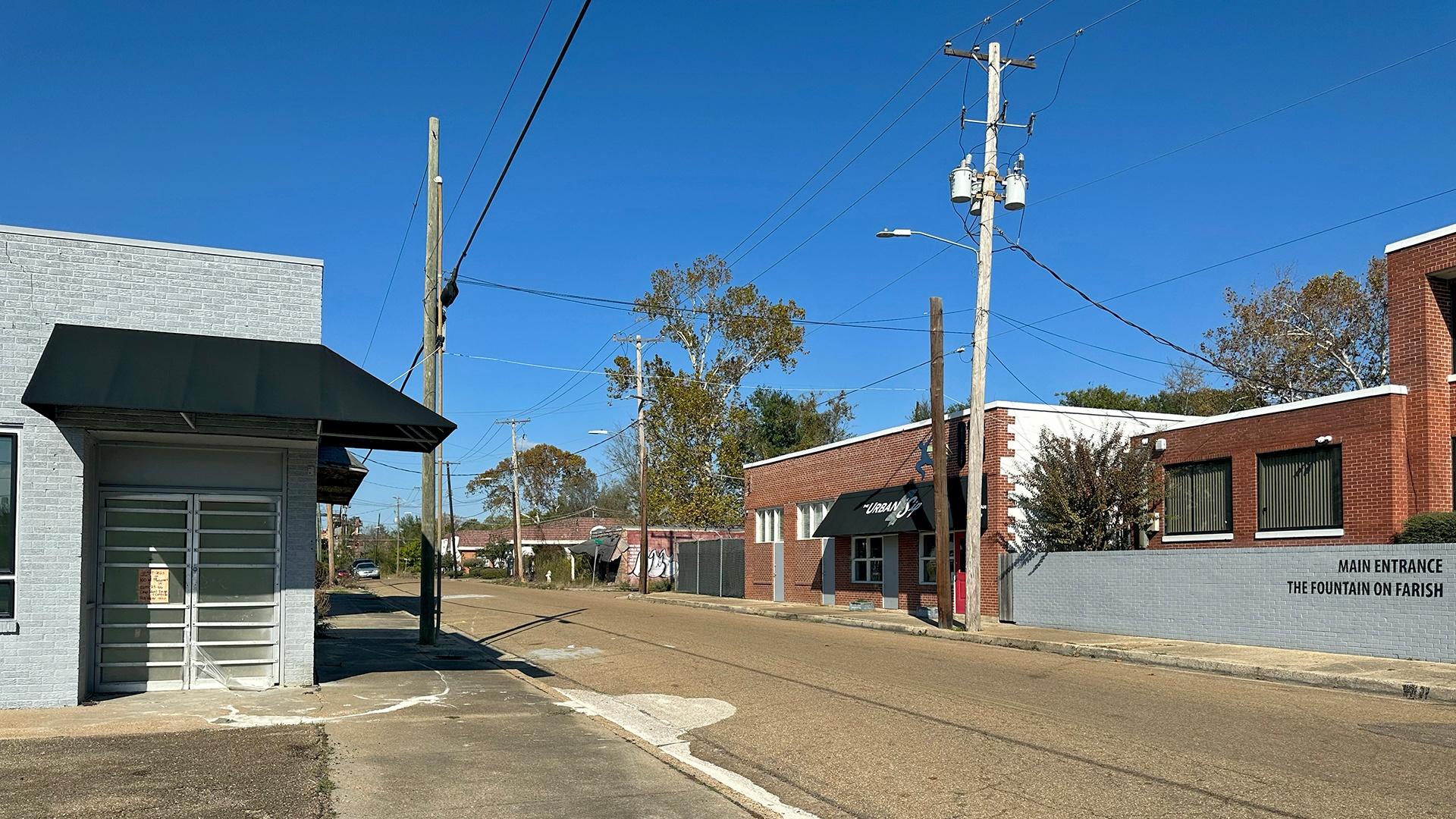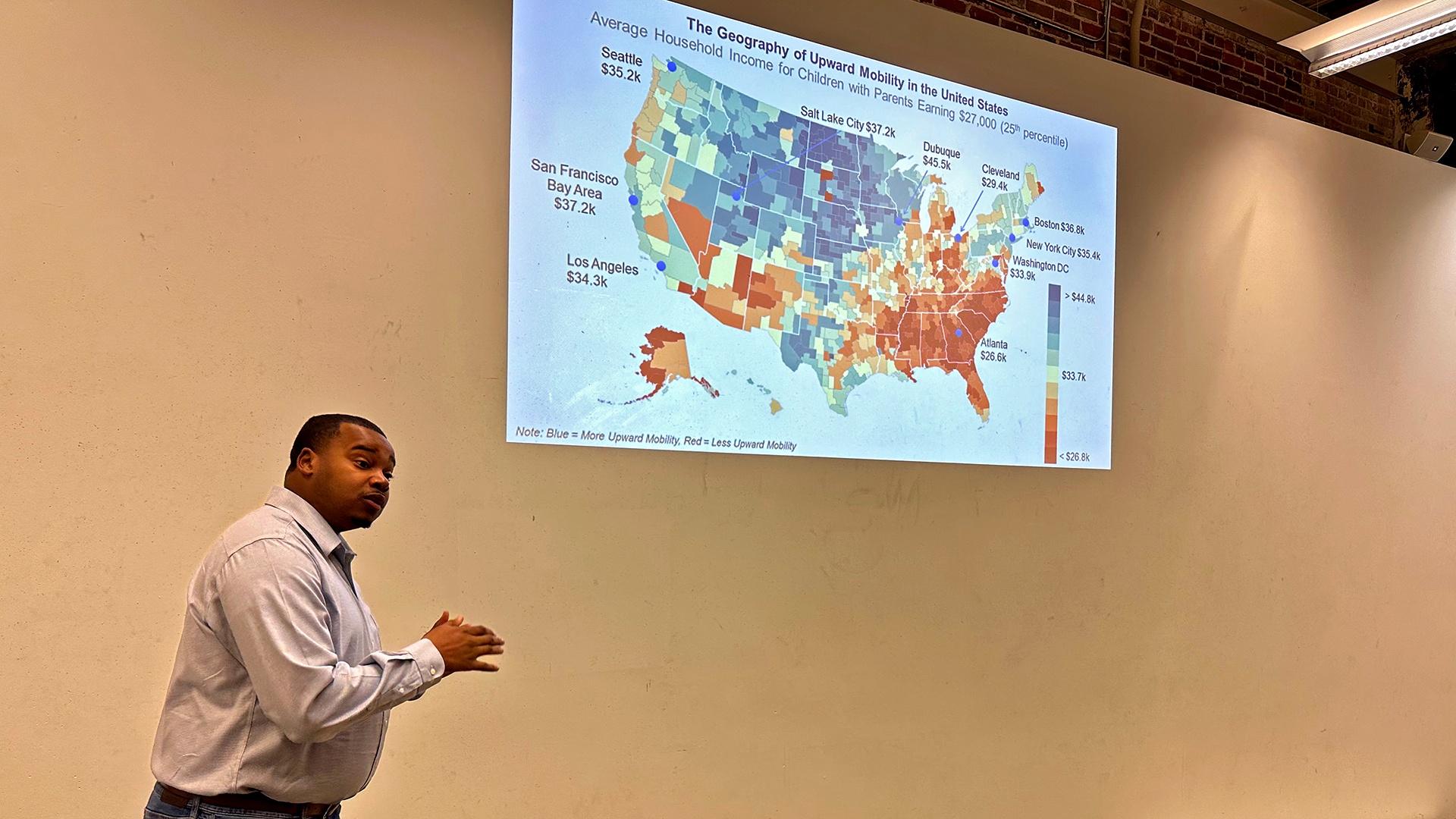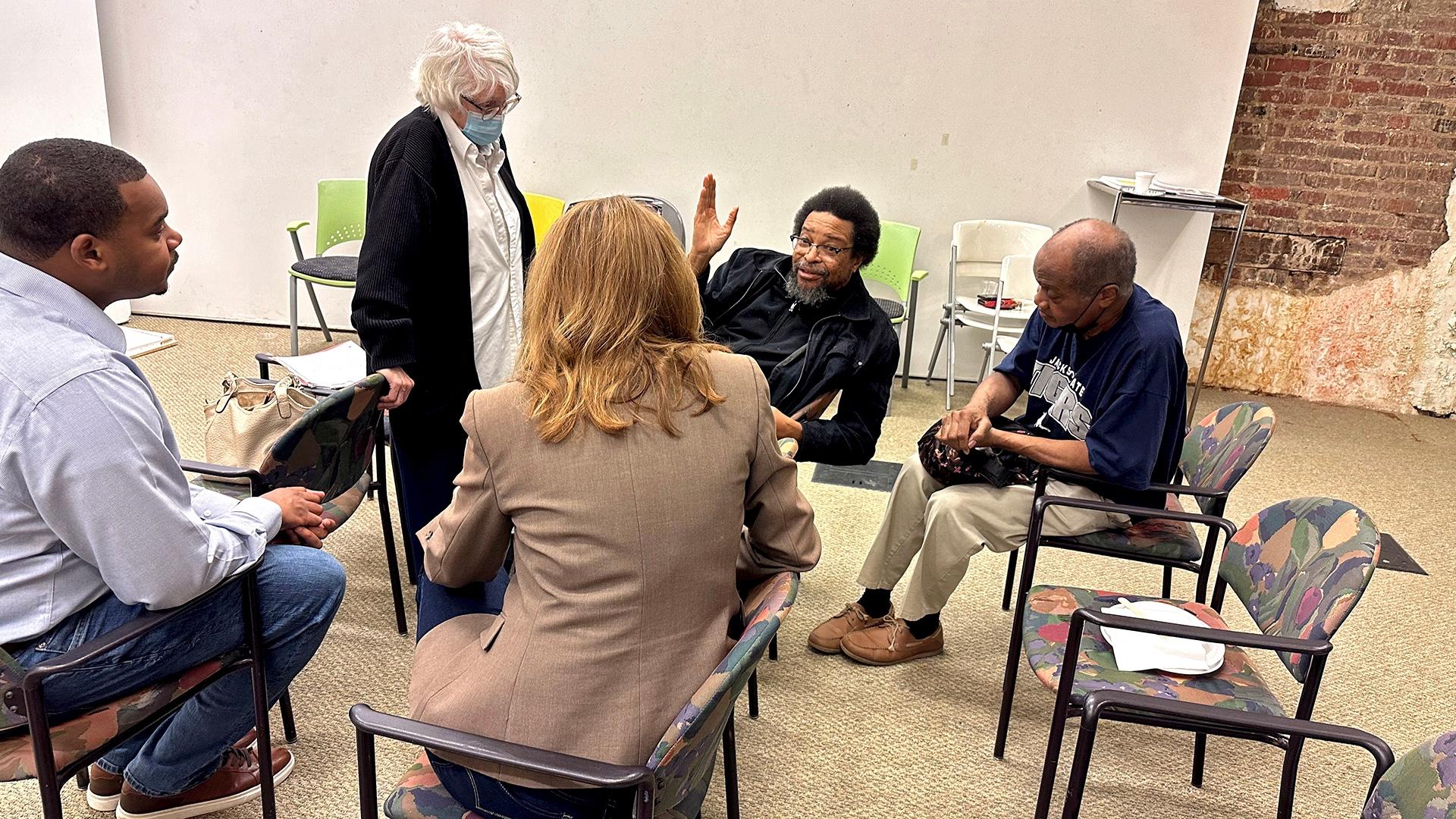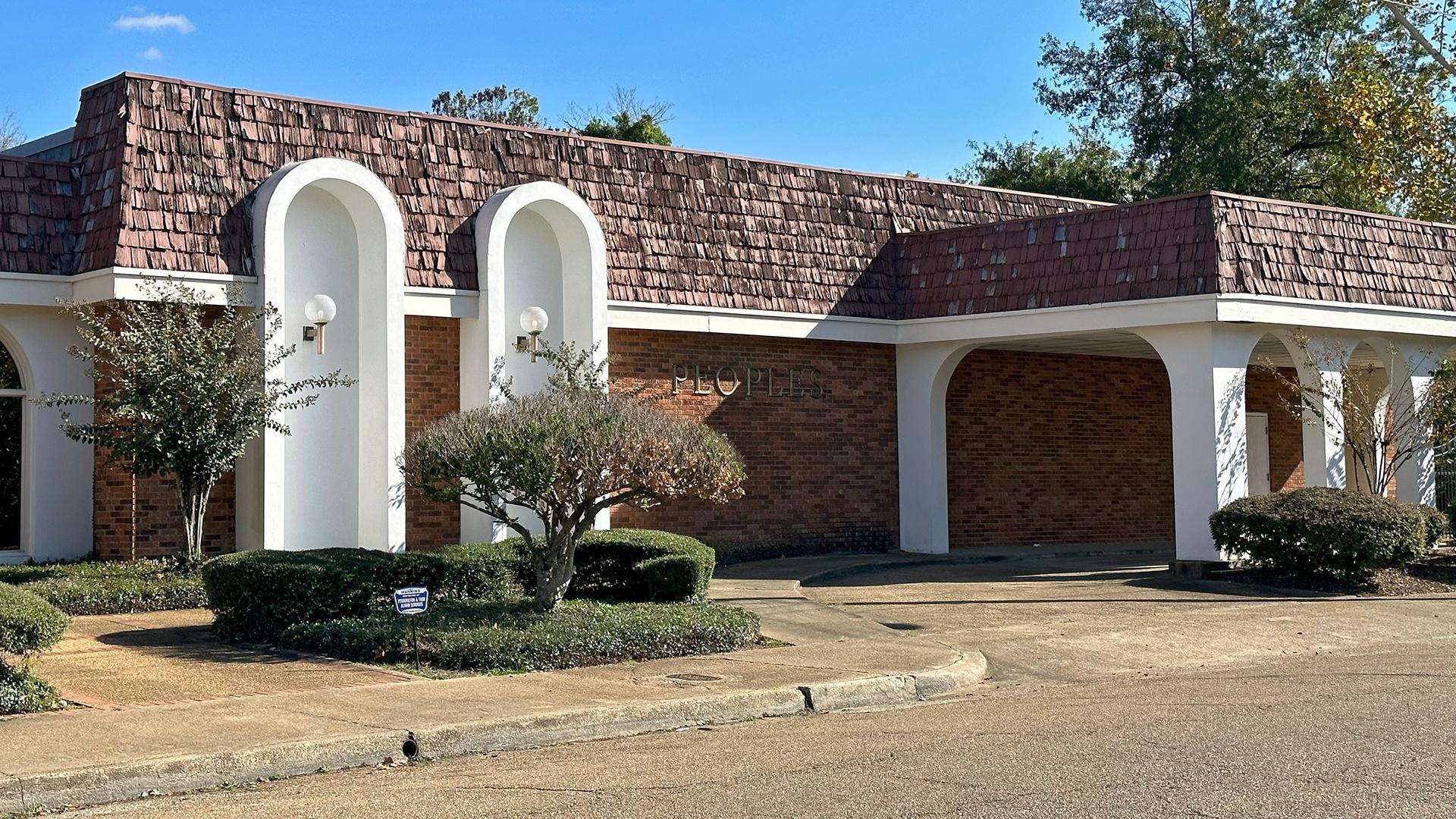In mid-November, a group of about 20 people gathered to talk about the latest heat mitigation plans. Early in the meeting, they look over a map illustrating the areas of the United States that have more economic mobility, or people’s chances of improving their economic status. Most of the Gulf South, including Mississippi, is deep red, signaling a lower chance of getting out of poverty for residents.
“You can sum up most of my life with this map,” said Alex Lawson, chair for the Jackson Redevelopment Authority. “My goal, my solitary objective, is to change this map.”
In Jackson, showing its economic mobility data next to the city’s heat index makes it pretty clear that most of the places in town that get the hottest are also the poorest.
“So it's not just economic conditions, it's climate conditions,” Lawson said. “It's all of the things that we're working to change and eradicate here. And this is what people are flocking from Jackson from.”
As climate change intensifies, marginalized communities like Farish Street rarely have the resources to adjust. But that could change soon.
2C Mississippi, a climate advocacy group, received federal funding from the U.S. Department of Agriculture Forest Service to plant trees and shrubbery on Farish Street. The move is not just for making the neighborhood look pretty, though. The Environmental Protection Agency says planting trees can help reduce temperatures in cities by providing shade, deflecting sun radiation, and releasing moisture.
Frank Figgers, a veteran civil rights advocate in Jackson, sees the project as a small part of a big-picture strategy of improving people's lives on Farish Street.
“Lowering the temperature could mean saving the lives of people or reducing their energy bill and having more money to spend on good food,” Figgers said. “It’s all connected.”







